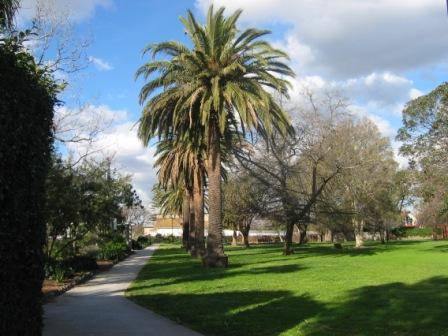| Back to search results » | Back to search page » |
|
RESERVE - JOHNSON PARK
Location12 PALMER STREET, and BASTINGS STREET, NORTHCOTE, DAREBIN CITY LevelIncluded in Heritage Overlay |
|
Statement of Significance
What is significant? Later additions, the fabric of the playgrounds, other furniture and the pathway surfaces are not significant. How is it significant?
Johnson Park, Bastings Street, Northcote, acquired by Council in 1913 and 'improved' between 1927 and 1933. Improvements included trees such as the Canary Island Palm row, a children's playground, shrubs and the name Johnson Park. It was created on land that formed part of a suburban subdivision of small lots around 1910 many of which were vacant at the time of Council's purchase. The following elements contribute to the significance of this place:
- the row of Canary Island palms
- an avenue of trees along the diagonal pathways from the northeast and northwest corners to the central feature
- the pathway layout, and specimen trees set within lawn
- mature trees along the perimeters of the park
- stone edging to garden beds; and
- remnants of pergola entry along Bastings Street boundary
Johnson Park in Bastings Street, Northcote is of local historic significance to Darebin City.
Historically, Johnson Park, Northcote is significant as an representative example of the early parks set aside in Northcote between 1907 and the early 1930s as a result of Council's 1906 resolution to set aside as parkland in the early twentieth century to secure such places in the interests of the health and recreation of present and future Northcote citizens. Its surviving early features provide representative evidence of the program of beautification of Northcote's parks associated with its jubilee celebration in c.1932-33. Later layers of improvements including mature trees contribute to the historic character of the park and provide evidence of later fashions and planting preferences. (AHC criteria A.4, D.2)
Group
Parks, Gardens and Trees
Category
Urban Park




